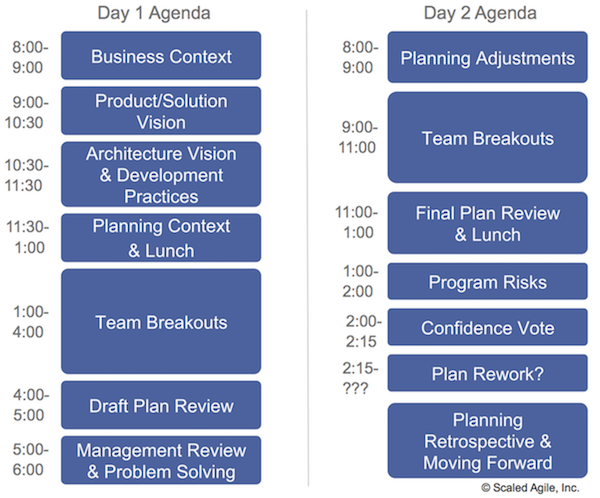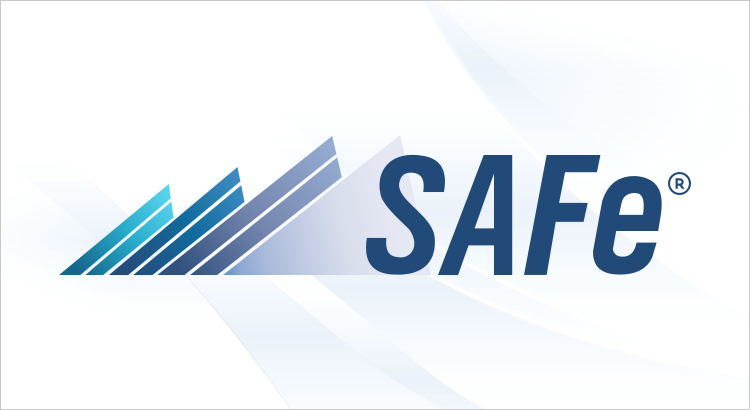Years ago when I joined, QBurst was a start-up with just 100 employees. Being fast-paced in technology adoption and service delivery, we adopted agile methodology early on—specifically Scrum. Now, as the company has grown to over a thousand people, we are in need of scaling agile. And that is what brings me to Scaled Agile Framework, aka SAFe!
SAFe is a framework for enterprise agility proposed by Dean Leffingwell in 2011. With changes being incorporated constantly, what we now have is version 4.5 of the framework.
SAFe incorporates the basic principles of Agile and Lean—agility along with excess elimination strategy. It has proven success stories compared to other agile frameworks in terms of productivity, employee gratification, and on-time delivery with extreme customer satisfaction.
While the maximum team size for frameworks like Scrum and Kanban is 15 -20, SAFe supports small-scale solutions that employ hundreds of employees to large and complex enterprises with thousands of employees. The framework encourages collaboration and alignment between different agile teams. This leads to increased productivity and monetary benefits for the enterprise.
SAFe Configurations
SAFe has different configurations with different ceremonies/roles for small solution organization to large-scale enterprise implementations. Essential SAFe configuration works in small solution organizations while Large Solution SAFe can be configured in medium-sized enterprises and Portfolio SAFe in large enterprises.
[caption id="attachment_17471" align="aligncenter" width="1763"]

Scaled Agile Framework[/caption]
Essential SAFe
Essential SAFe is the heart of the SAFe framework. Essential SAFe consists of both team and program levels structures. The Team level structure has the same characters and ceremonies as the Lean, Kanban, or Scrum frameworks.
Key Artifacts: Team, Product Owner, Scrum Master, Iterations, User Stories
The Program level structure has Agile Release Trains [ARTs], which combine multiple agile teams. The teams are considered to be the different coaches of ART. There is an Architectural Runway where the technical infrastructure for existing code and future features are added. Scrum of scrum teams headed by Release Train Engineers [RTEs], System Architects/Engineers, and a Product Management team are also part of this structure. The requirements are in the form of features with enablers, which enable both technical and non-technical support. A feature is a requirement that covers the customer needs.
The System Architect/Engineer is an individual or a small team that works towards a common goal for the system under development. The Product Management team maintains content authority over the product backlog.
System demo is the outcome of the essential SAFe.
DevOps play an important role in delivering features. SAFe enterprises incorporate DevOps to breakdown the huge quantity of tasks and ensure continuous delivery to the customer.
Key Artifacts: Program A/E, Product Management, RTE, Features, Enablers, Architectural Runway
Large Solution SAFe
Large Solution SAFe has Value Stream containing multiple Release Trains and the requirements are in the form of Capabilities with enablers. Value stream is the series of steps that the organization uses to ensure a continuous value delivery to the customer. Capability is the higher-level solution behavior, which is split into features at the program level.
The Large Solution configuration includes Solution Management, Solution Train Engineer, and Solution Architect/Engineer.
Solution Management has the content authority over the Solution backlog. They work closely with customers and define the roadmap and vision for the solution.
Solution Architect/Engineer is an individual or a small team that defines the technical and architectural vision of the solution under development.
The Solution Train Engineer facilitates and guides the work of all agile release trains.
Solution Demo is the outcome of the Large Solution configuration.
Key Artifacts: Solution A/E, Solution Management, Solution Train Engineer [STE], Capabilities, Value Stream
Portfolio SAFe
The Portfolio SAFe configuration is based on the Strategic Themes of enterprises employing thousands of employees. Portfolio SAFe contains the people and processes necessary to build systems and solutions that the enterprise needs to meet its strategic objectives.
Multiple Value Streams work together for Epic requirements and enablers are included for hardware/software support. There are Enterprise Architects, Epic owners, and Lean Portfolio Management in this configuration.
Enterprise Architects promote and initiate the architectural practices for the portfolio. Enterprise Architects also facilitate the reuse of ideas, components, services, and proven patterns across various solutions in a portfolio. They work with business stakeholders and Solution and System Architects to implement technology initiatives across Value Streams.
Epic owners define and coordinate the portfolio epics. They work directly with the stakeholders of ART and SRT and define the features and capabilities for the Program and the Solution. They analyze the epics before committing for implementation.
Lean Portfolio Management focuses on making right investments to achieve the business objective of the enterprise. Budgets are shared with multiple Value Streams to achieve alignment and synchronization between different streams.
Key Artifacts: Epic Owner, Enterprise Architects, Lean Portfolio Management, Strategic Themes, Epics
Full SAFe
Full SAFe is the most complex version of SAFe. It supports enterprises that build and maintain large integrated solutions, which require hundreds of people or more. Full SAFe includes all the levels of SAFe—Team, Program, Large Solution, and Portfolio.
Program Increment Planning in SAFe
Program Increment [PI] planning is a two-day ceremony in SAFe, which is an iterative face-to-face event that aligns the ARTs. If you are practising SAFe, you should perform PI planning.
The inputs for PI planning are the business context, roadmap and vision, and the top ten features to be implemented. The outcomes are the PI objective and the program board.
PI objective is a set of objectives, which are created by each team and are committed for the upcoming program Increment. The PI objectives should be achievable, realistic, and time bound. The program board is the planning board that highlights the new features, delivery dates, and its dependencies with other ARTs.
The attendees of the PI planning event include Business Owners, Product Management, Agile Teams, System and Solution Architect/Engineers, the System Team, and the Stakeholders. The meeting follows a standard agenda as depicted below.

SAFe Principles and Core Values:
SAFe is wrapped in a set of principles and core values. There are nine basic principles that all SAFe practitioners should follow.
- Take an economic view: Traditionally, economic constraints and budgeting are known only to the management. SAFe says each and every worker should know the constraint and thus, everyone should have an economic view of the service/product they develop.
- Apply system thinking: SAFe incorporates all the aspects of the system and its environment into the design, development, deployment, and maintenance of the system.
- Assume variability, preserve options: People are inclined to reduce variability. It’s the human nature. If we preserve options, like variable designs, in planning phase, it will definitely help in avoiding risks.
- Build incrementally with fast, integrated learning cycles: Fast learning cycles with PDCA [Plan DO Check Act] helps in controlling the variability of solution development.
- Base milestones on objective evaluation of working system: Milestones should be based on a working system with system demos. Only then can stakeholders measure and evaluate it.
- Visualize and limit WIP, reduce batch sizes and manage queue lengths: Overloading the team with more than they can accommodate is a disaster. To overcome this, limit the work-in-progress items and thereby reduce batch size. As per Little’s Law, the longer the queue length, the longer the wait time.
- Apply cadence, synchronize with cross domain planning: Cadence are the routines or iterations that contribute towards managing variables. PI [Program Increment] helps in achieving this. Synchronization pulls the different assets of the system together.
- Unlock the intrinsic motivation of knowledge workers: According to SAFe, knowledge workers [who know the application better than their bosses] should be motivated unceasingly.
- Decentralize the decision making: SAFe says; centralize strategic decisions and decentralize everything else.
Core Values:
The key to SAFe’s effectiveness are its core values, namely:
Being SAFe
There are proven case studies, which show 10– 50% happier and more motivated employees, 30– 75% faster time-to-market, 20– 50% increase in productivity, and 25– 75% defect reduction when using SAFe as the process framework. No wonder SAFe is spreading rapidly around the globe and most of the fortune 100 companies are already using it.
When SAFe is in place everyone including the agile teams and the management is on the same mission and goal. This helps in achieving the objective faster. SAFe can be implemented in projects having multiple products with different agile teams. To implement SAFe in your organization, you can organize trainings and certification programs provided by the Scaled Agile Inc.
As Edwards Deming, the famous American mathematical physicist, says “Only management can change the system.” There should be a strong leadership team to lead the change in every organization. Be the leader and inspire and align your people to go SAFe and be SAFe!
Images credit: www.scaledagileframework.com
 Scaled Agile Framework[/caption]
Scaled Agile Framework[/caption]


